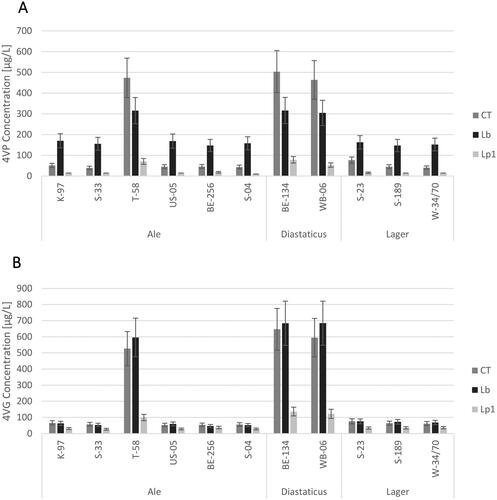Figures & data
Figure 1. Acidification kinetics. pH levels in wort throughout lactic fermentation performed by different LAB strains (13.5°P wort, 5 g/hL pitching rate, 30 °C fermentation temperature, 48h fermentation time). Each value is expressed as a mean ± standard deviation of triplicates from three independent brews. Nomenclature: Lb: Levilactobacillus brevis; Lp1, Lp2, Lp3: Lactiplantibacillus plantarum. At the end of the acidification, a different annotation denotes a significant difference at P < 0.05 (Fisher’s LSD procedure).
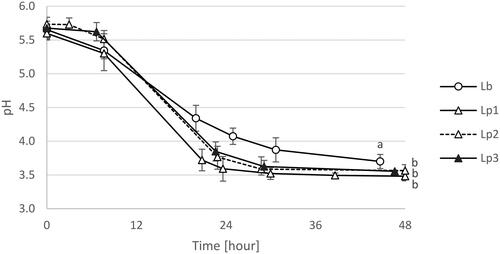
Figure 2. Sugar (A) and organic acid (B) concentrations. Concentrations in the non-acidified (control) and acidified worts, lactic fermentation performed by different LAB strains (13.5°P wort, 5 g/hL pitching rate, 30 °C fermentation temperature, 48h fermentation time). Each value is expressed as a mean ± standard deviation of triplicates from three independent brews. Nomenclature: CT: non-acidified (control) wort; Lb: Levilactobacillus brevis; Lp1, Lp2, Lp3: Lactiplantibacillus plantarum. For each variable, a different annotation denotes a significant difference at P < 0.05 (Fisher’s LSD procedure).
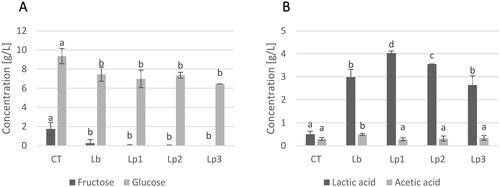
Table 1. Non-acidified (control) and acidified wort parameters. Each parameter is expressed as a mean ± standard deviation of triplicates of three independent brews.
Figure 3. Post-acidified and hopped wort bitterness (A) and color (B). Concentrations in the non-acidified (control) and acidified worts, lactic fermentation performed by different LAB strains (13.5°P wort, 5 g/hL pitching rate, 30 °C fermentation temperature, 48h fermentation time, 1h boiling time, 1 g/L added hop). Each value is expressed as a mean ± standard deviation of triplicates from three independent brews. Nomenclature: CT: non-acidified (control) wort; Lb: Levilactobacillus brevis; Lp1, Lp2: Lactiplantibacillus plantarum. For each variable, a different annotation denotes a significant difference at P < 0.05 (Fisher’s LSD procedure).
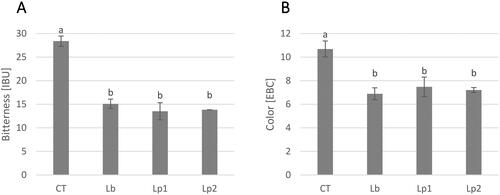
Figure 4. Volatile phenol concentrations. Concentrations are expressed as a mean ± standard deviation of three independent measurements. Nomenclature: PreB: pre-boiling; PostB: post-boiling; 4VP: 4-vinylphenol; 4VG: 4-vinylguaiacol; 4EP: 4-ethylphenol; 4EG: 4-ethylguaiacol; CT: non-acidified (control) wort, Lb: Levilactobacillus brevis; Lp1, Lp2: Lactiplantibacillus plantarum. For each variable, except 4EG, a different annotation denotes a significant difference at P < 0.05 (Fisher’s LSD procedure). Statistical analyses are not provided for 4EG as its concentrations are below the quantification limit.
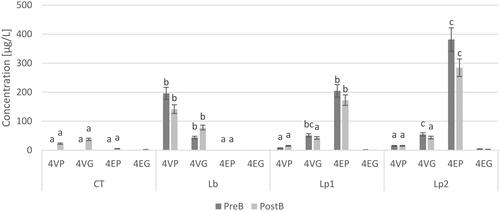
Figure 5. Alcoholic fermentation kinetics. Ethanol content throughout the alcoholic fermentation performed by different brewer’s yeast (13.5°P wort, 50 g/hL and 100 g/hL pitching rate for respectively ale and lager strains, 20 °C and 14 °C fermentation temperature for respectively ale and lager strains, 8–12 days fermentation time). Each value is expressed as a mean of triplicates from one experimental trial. Nomenclature: CT: non-acidified control; Lb: Levilactobacillus brevis; Lp1: Lactiplantibacillus plantarum.
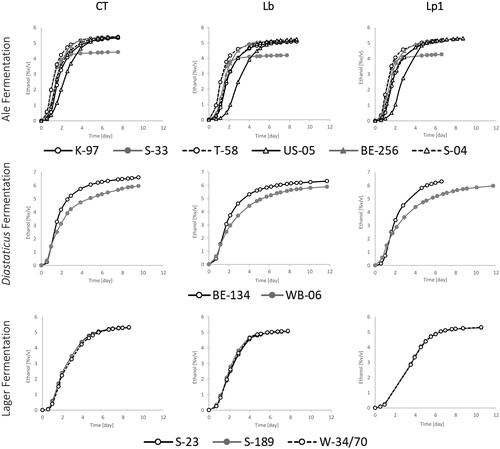
Table 2. Physicochemical parameters of the fermented sour beer. Alcoholic fermentation performed by different yeast strains (13.5°P wort, 50 g/hL and 100 g/hL pitching rate for respectively ale and lager strains, 20 °C and 14 °C fermentation temperature for respectively ale and lager strains, 8–12 days fermentation time).
Figure 6. Non-acidified and sour beer bitterness. Iso-α-acid concentrations in the fermented products, alcoholic fermentation performed by different yeast strains (13.5°P wort, 50 g/hL and 100 g/hL pitching rate for respectively ale and lager strains, 20 °C and 14 °C fermentation temperature for respectively ale and lager strains, 8–12 days fermentation time). Each value is expressed as one value from a unique experimental trial ± instrumental uncertainty. Nomenclature: CT: non-acidified (control) beer; Lb: Levilactobacillus brevis; Lp1: Lactiplantibacillus plantarum.
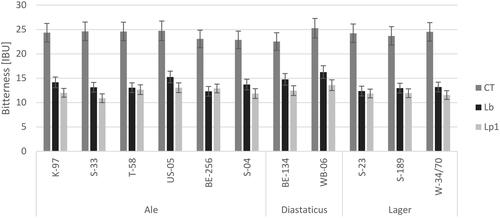
Figure 7. Volatile 4-vinylphenol (A) and 4-vinylguaiacol (B) concentrations. Concentrations in the fermented products, alcoholic fermentation performed by different yeast strains (13.5°P wort, 50 g/hL and 100 g/hL pitching rate for respectively ale and lager strains, 20 °C and 14 °C fermentation temperature for respectively ale and lager strains, 8–12 days fermentation time). Concentrations are expressed as one value from a unique experimental trial ± confidence interval of 95%. Nomenclature: CT: non-acidified (control) beer; Lb: Levilactobacillus brevis; Lp1: Lactiplantibacillus plantarum.
